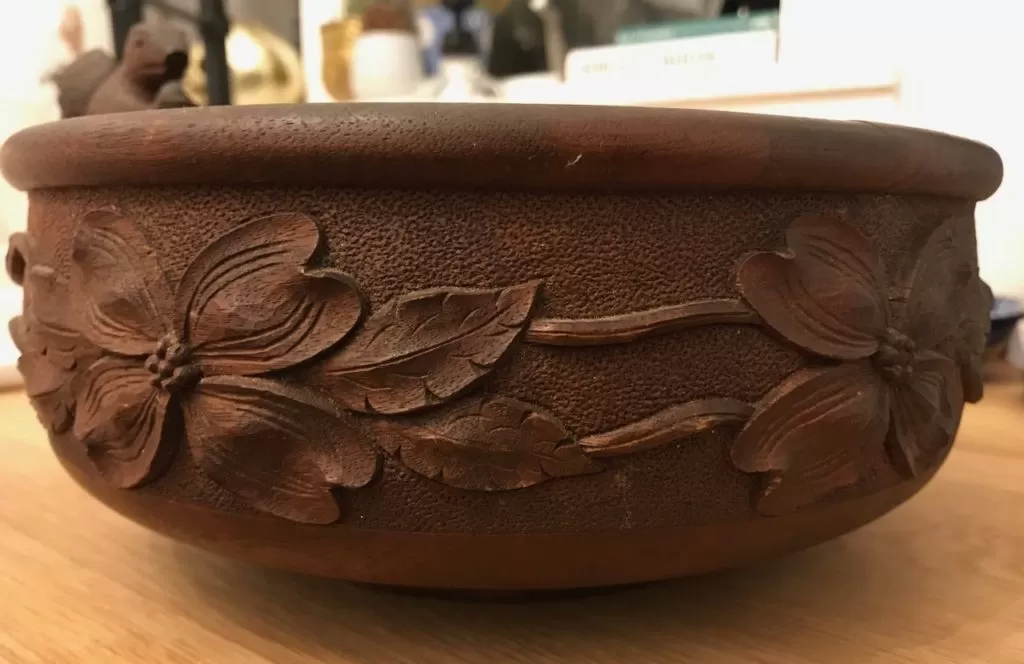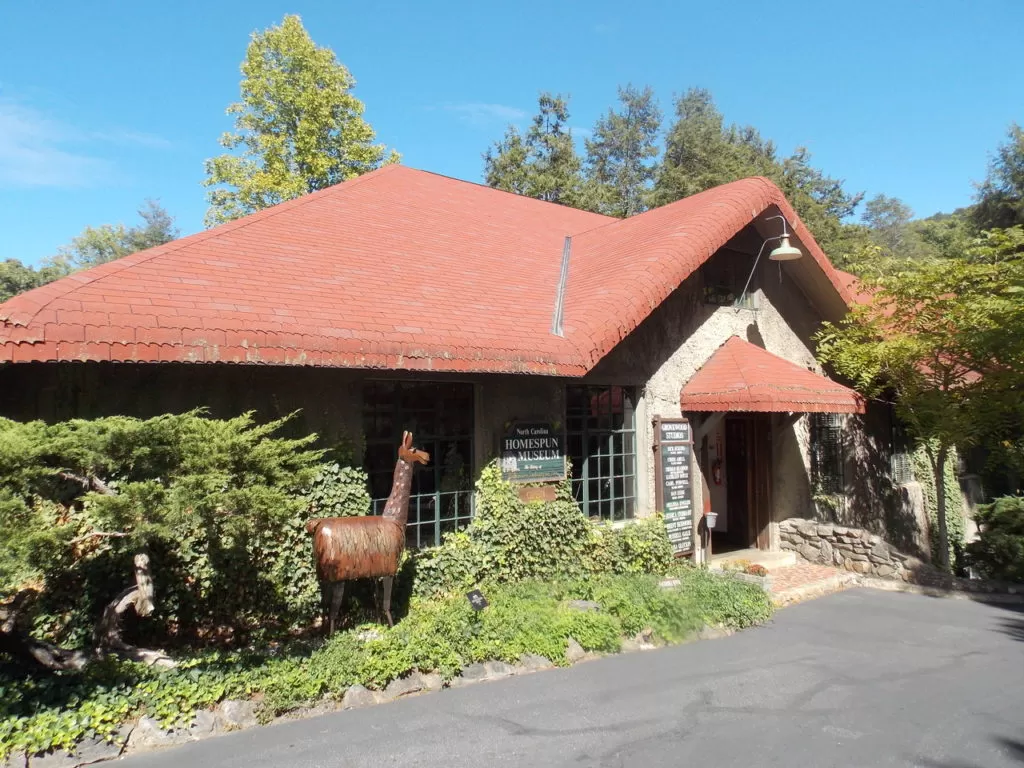Is It Biltmore Industries or Biltmore Estate?
Editor’s note: this article has been republished and has been edited to reflected the Grovewood Village’s new website.
Original date of publication: January 25th, 2016.
For those of you coming to the 35th National Arts and Crafts Conference in February a few days earlier to enjoy the sights of Asheville, it may have crossed your mind to visit the iconic tourist attraction, and one that Asheville is known for: the Biltmore Estate. However, recently you may have read a few of Bruce’s columns talking about Biltmore Industries along with Charlotte Yale, Eleanor Vance, and their connection to the Grove Park Inn — and a tour of Biltmore Industries is also offered during conference weekend. So what is the difference between these two entities? Read on to find out!

“Stickley” isn’t the only Arts & Crafts name that can be a bit confusing.
And with so many of you traveling to Asheville, NC for the 29th National Arts & Crafts Conference at the Grove Park Inn in a couple of weeks, we thought we’d clear up a few questions.
Biltmore Industries was an Arts & Crafts cottage industry founded five miles away from the Grove Park Inn in 1905 by Edith and George Vanderbilt for the sons and daughters of their employees on their 125,000-acre Biltmore Estate. The workers and their families lived in a small, adjacent village called Biltmore Village, now a quaint collection of restaurants, shops and galleries.
Three Biltmore names: once all connected, now three separate historic attractions.
Biltmore Industries remained in Biltmore Village from 1905-1917, when Fred Seely, designer of the Grove Park Inn and close friend of Elbert Hubbard, bought it from Edith Vanderbilt and moved the woodworkers, weavers and woodcarvers into five Arts & Crafts workshops he built next to the Grove Park Inn. Their woodworking department flourished into the 1940s, and their oak looms remained busy producing homespun cloth for ladies’ and men’s suits until the 1970s. The buildings have since been restored as a restaurant, the Grovewood Gallery, an auto museum, and several artisan workshops.
The woodworkers primarily made small, hand-carved items which were sold to tourists, local residents and guests at the Grove Park Inn. As a result, they can surface today in just about any part of the country. Although they subscribed to Gustav Stickley’s The Craftsman magazine, most of their bookends, bowls, letter openers, bookracks, picture frames and similar items were made from walnut or mahogany, both better suited to hand carving than quartersawn oak.
The most desirable among collectors are those items with the deepest, most advanced carving of natural motifs, most notably the dogwood blossom or the grapevine. In contrast, a plain bookend with a single monogrammed letter carved by one of the beginning craftsmen sparks only minimum interest.
Although their brochures illustrated pieces of furniture, these rarely surface. Still considered rare, a larger number of small walnut or mahogany benches, with carved seats, have appeared in collections and on the antiques market.
Three shopmarks appear most frequently. The earliest (1905-1917) featured a branded arrow around the word “Forward” placed over “Biltmore, N.C.” After the move in 1917, the “Forward” arrow appeared over “Asheville, N.C.” Later items were branded only with block letters “Hand-Made And Hand-Carved / Biltmore Industries / Asheville, N.C.”
While not a household name even among Arts & Crafts collectors, the hand-carved bowls, frames and bookends made at Biltmore Industries serve as excellent examples of the products of manual arts workshops, classes, schools and cottage industries — products that reflect an allegiance to the Arts & Crafts philosophy that many more famous figures often neglected.
For more information, we suggest you check out these websites:
Biltmore Industries:https://www.grovewood.com/history-things-the-grove-park-roycroft-connection/
Grovewood Gallery: https://www.grovewood.com/

